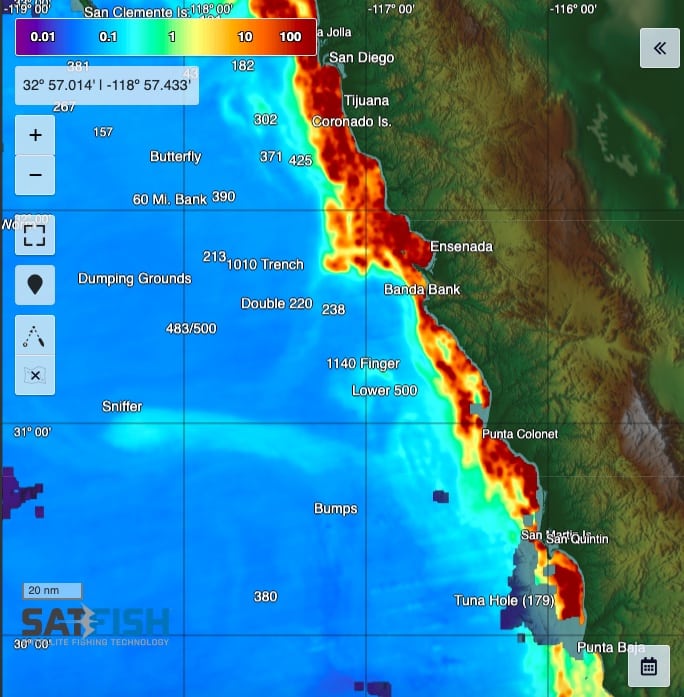Chlorophyll concentration maps display the quantity of plankton and other plant life in the surface layer of the ocean.

Chlorophyll is the pigment that makes plants green. Phytoplankton use chlorophyll just like land plants to convert energy from the sunlight into sugars via photosynthesis. In general, more phytoplankton generally means more chlorophyll.
The colors on Satfish’s chloro charts show how much chlorophyll is in the water. Red colors on the chart mean lots of chlorophyll, and blue and purple colors mean very little chlorophyll is present. Chlorophyll is measured on a logarithmic scale, but just remember that more chlorophyll (yellow, orange, and red colors on the chart) means more plankton and therefore greener water.
The phytoplankton that produce chlorophyll are the base of the food chain, allowing life in the open ocean to flourish.
Zooplankton eat phytoplankton, and small baitfish eat zooplankton and phytoplankton. In turn, bigger gamefish like marlin, tuna, wahoo, and mahi chase down these smaller baitfish. The tradeoff is that lots of chlorophyll also makes the water really murky, which makes it easier for baitfish to hide from bigger fish that hunt by eyesight. In general, predatory gamefish patrol along the cleaner edges where they can easily see any baitfish that get caught out from their safe hiding spot in the murky water. Some gamefish species like albacore really prefer the super clean, purple-blue water, whereas other species like bluefin tuna don’t mind the dirty water as much and will plow right into the dirty water where most of the food is.
There are a few satellites that measure chlorophyll as they pass overhead. Optical sensors read the color of the ocean, and this in turn is converted into a concentration of chlorophyll based on the amount of blue and green light that is absorbed into the ocean’s surface. These satellites can only measure chlorophyll during daytime hours and they can’t “see” through clouds, so we are only able to get a few shots each day. To make up for this, SatFish also uses our own custom data processing to combine the day’s chlorophyll shots into 1-day and 3-day composites, in addition to providing each individual satellite shot, to bring you the maximum coverage available.
